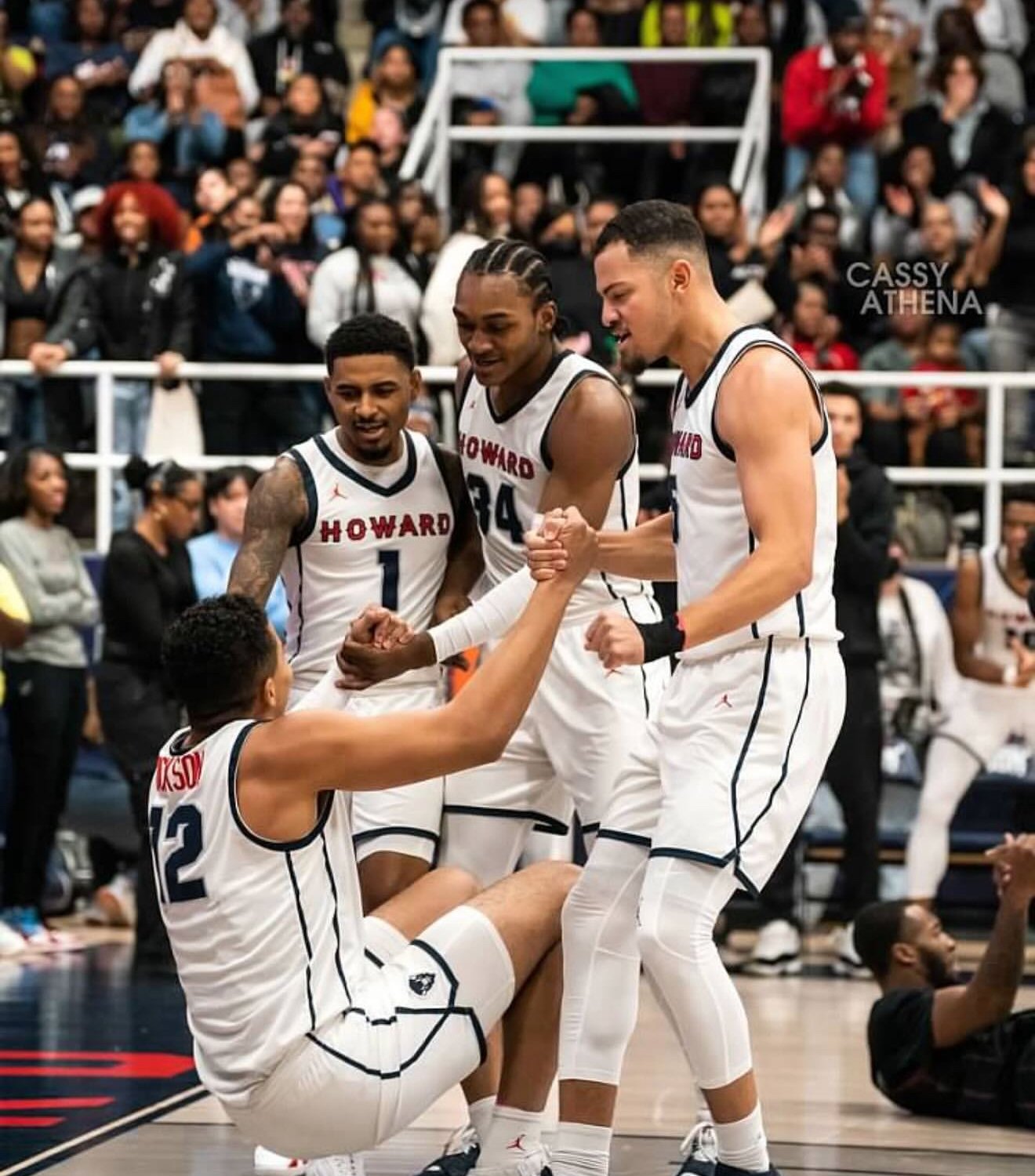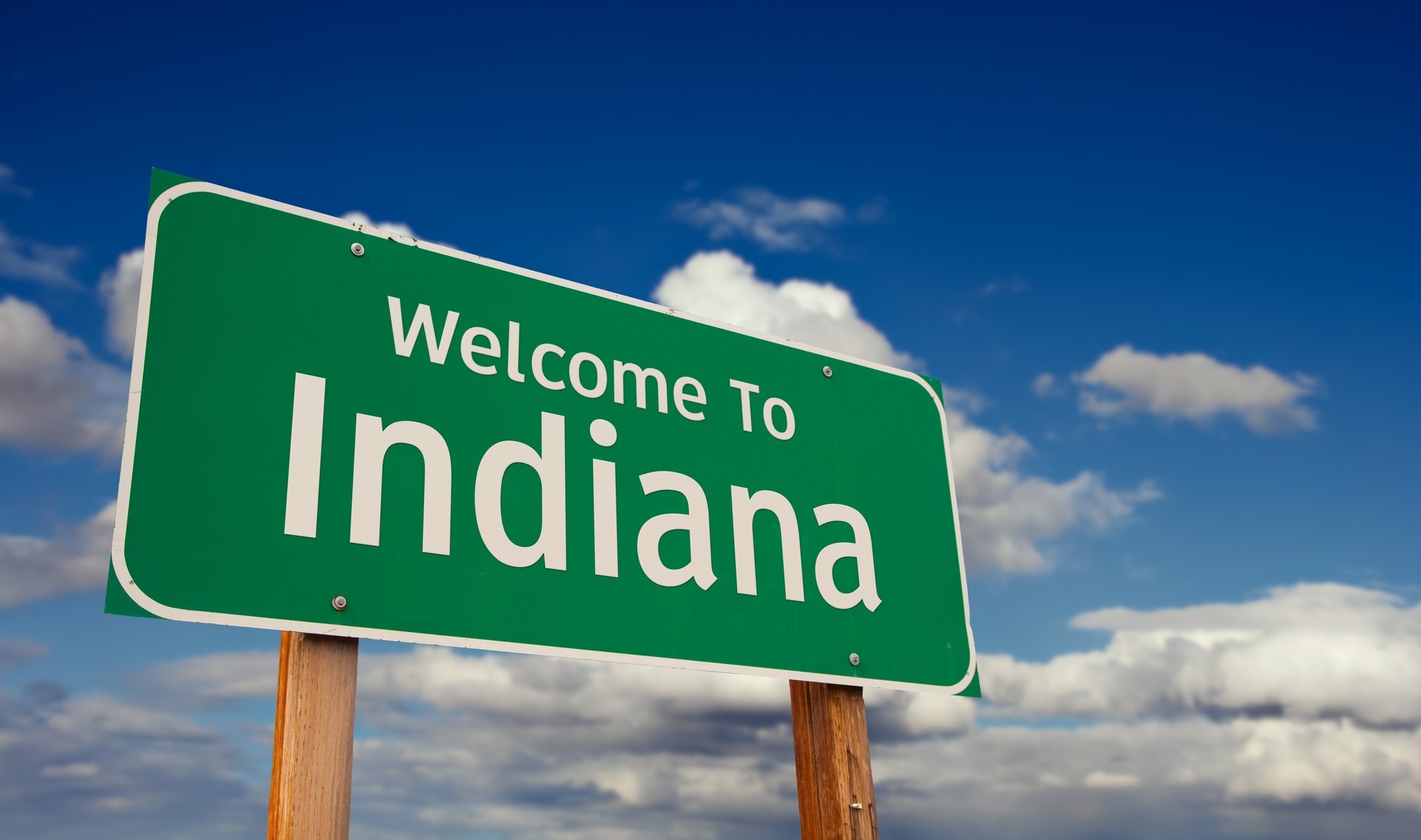Good morning, and thanks for spending part of your day with Extra Points.
FAIRFIELD, CT---
It is Saturday night, and there is a lot happening in the college sports world. It's football championship week, and the Big Ten and ACC championship games are happening as I'm typing. Deion Sanders is allegedly going to be announced as the next head coach of Colorado like, any minute now. The NCAA Volleyball Tournament is happening.
And I am in Fairfield, Connecticut, getting ready to leave a MAAC men's basketball game between two teams that haven't cracked the top 230 in KenPom. And honestly, I think I made the right editorial decision.
I'm not really here to write about the basketball game, where the Fairfield Stags defeated the Saint Peter's Peacocks, 67-55, to kick off MAAC play. I'm here to write about Fairfield's new basketball arena.
And let's be clear about this. It's an exceptional mid-major basketball facility.
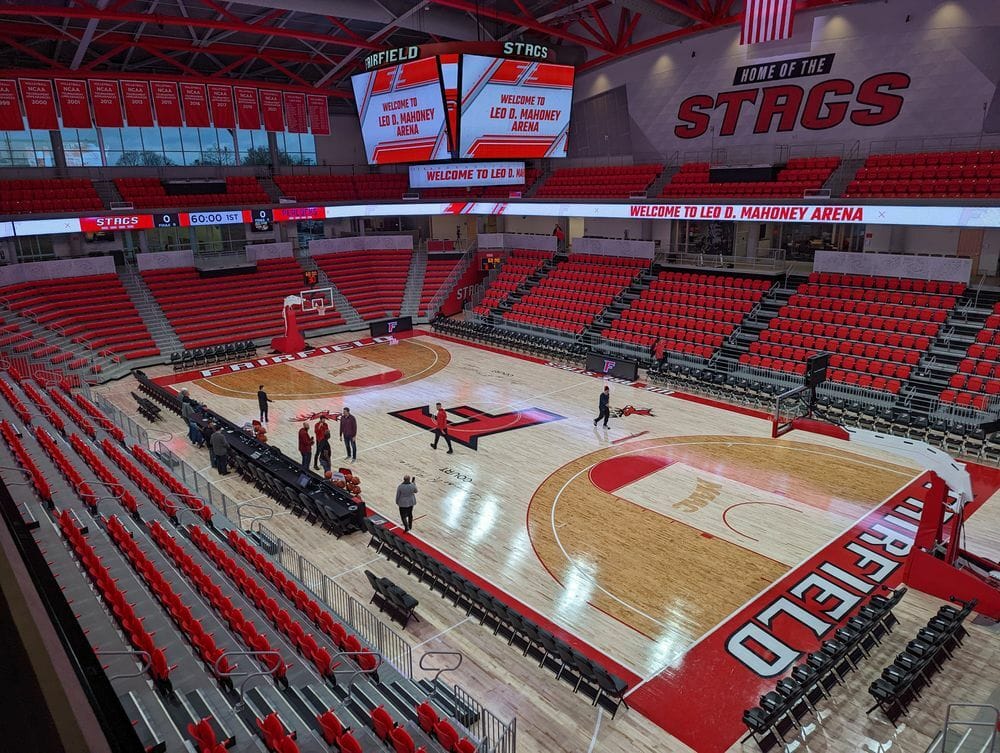
The Leo D. Mahoney Arena has a listed capacity of 3,500. Most of the seats are individual seats, rather than bleachers, and are spaced out enough to make sure everybody can watch comfortably. The sight lines are excellent, the video board is large and modern, and the facility has virtually any amenity that anybody could want out of a mid-major basketball arena. Multiple team stores, plenty of bathrooms, multiple places to buy a beer or a hot dog, updated locker rooms for the men and women's teams, athlete refueling stations...the works. It looks awesome.
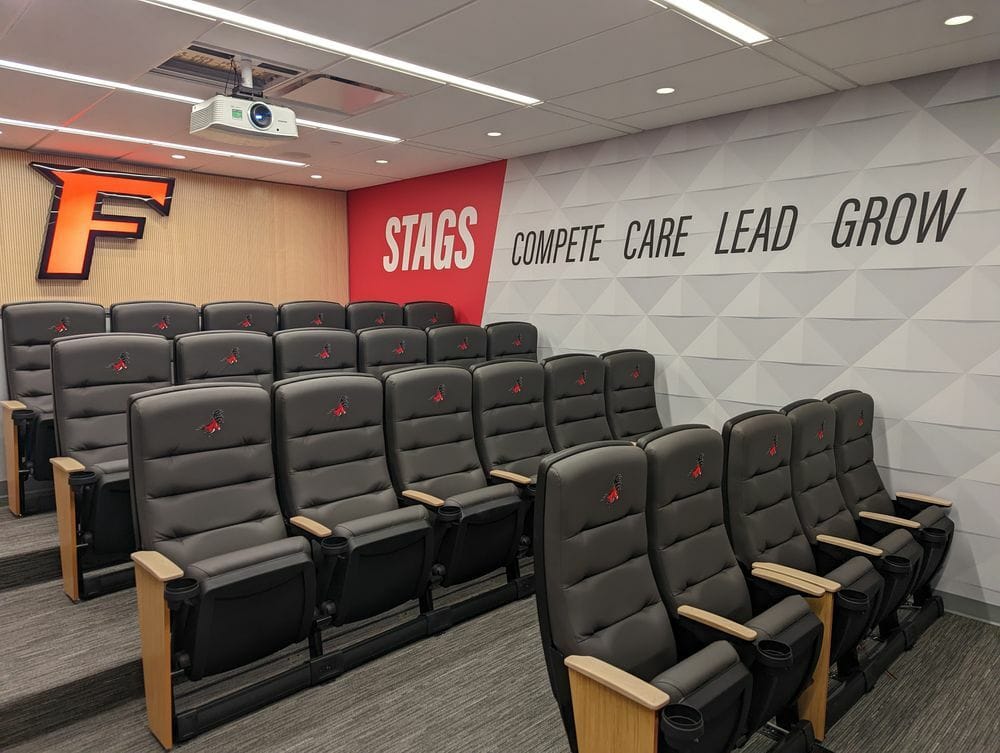
But even after catching a game here, and scrolling through all the photos I took, I came to the conclusion that I am not a good enough wordsmith to find 1,500 interesting words to simply convey that the basketball and volleyball arena is handsome, modern and clean. There are only so many interesting ways to describe a building. Or at least, only so many that I know how to type.
The more interesting thing, I think, is why the building exists.
***
Stags fans and staffers explained it to me like this.
The Stags used to play in an on-campus arena called Alumni Hall, built in the late 1950s. It might have been a technical marvel in 1959, but even by the 1980s, it was starting to show its age.
Fairfield men's basketball made a pair of NCAA Tournaments in the mid 1980s, and had a few strong seasons in the 1970s, but few would count the place as one of the most successful mid-major programs of the era, even regionally. But plenty of fans who went to games there told me that even when the team was struggling, Alumni Hall was loud.
Here's Wally Hallas, a longtime fan, former Fairfield Prep athlete and university VP, quoted by CT Today:
Halas said he still remembers the exhilaration he felt on game days. {watching the Stags} running out of the locker room onto the court to cheering fans who would throw red and white streamers.
“It was like a cascade of color,” he said.
He pointed to the stands, describing the faces that would watch through windows at the end of the gym and a crowd that packed the bleachers until they were standing on the top row. Cheers would echo off the cement wall that used to separate the space into two courts in the early days, amplifying each fan’s voice, he said.
“Instead of 1,200, it would sound like there were 2,400,” he said.
To hear school officials tell it, even without elite results or a massive campus, Fairfield could still count on a culture of athletic department participation. People, especially those close to the campus community, would show up.
But then things changed.
In 2002, Fairfield moved their men's basketball games to what's now called Total Mortgage Arena, a 10,000 seat arena in neighboring Bridgeport. Several other regional universities, including many in the Big East, were making similar decisions, opting to play off-campus in favor of larger, more urban, facilities.
It wasn't a good fit. Total Mortgage is first and foremost a hockey arena, not a basketball one, and fans complained the views weren't quite as good. The arena was too big for the fanbase, so the atmosphere faltered.
But most importantly, it wasn't on campus. The school ran marketing campaigns and offered shuttle service, but trying to convince fans to hop on a bus to go to downtown Bridgeport to watch a (mostly) meh basketball team was a tough sell.
Good college athletic programs, with huge enrollments and deep traditions of success, struggle to get students to go to a second location. Just ask folks at UCLA or Miami. Getting students at an average MAAC school to go to Bridgeport?
Good luck. School officials told me they'd average around 200 students a game, even when the team was good or hosting a quality opponent. If Fairfield wanted to rebuild that atmosphere, they'd need to find a way to come back home.

***
I'm guilty of this sometimes, but it's easy to fall into the trap of thinking about all of these projects as primarily transactional. You need to buy X in order to recruit Y athlete, which will translate into ticket sales X, or conference invite Y, or student recruitment goal Z. Plot the whole thing on the spreadsheet and off you go, right?
And sure, there are some potential benefits to having one of the nicest mid-major campus facilities in the region. Fairfield will soon announce a new multimedia rights partnership, and now they have plenty of shiny new inventory to sell against. The building can host events for not just Stags basketball, but neighboring high school Fairfield Prep, as well as concerts or other programming. There is a luxury seating area that will assuredly be the home of all kinds of schmoozing for future university development projects. That's all part of the deal.
But university president Dr. Mark Nemec told me that despite all of that, they're not planning on the project ever becoming a profit center. Unlike other private schools, Fairfield isn't struggling with student recruitment either.
The major draw, to him, is more about what kind of school Fairfield is. And his explanation really got me thinking.
***
Fairfield is a Jesuit university. You certainly don't need to be a Catholic to attend, but the institution's profile and goals are very much shaped by that Jesuit identity.
Nemec told me that as a Jesuit school, they seek to help prepare students to "be men or women for others," through curriculum and values centered around service and uplifting the world. He also told me that the school also seeks, as part of that Jesuit tradition, to "accompany young people in the creation of a hope-filled future."
I mentioned to both Nemc and Paul Schlickmann, the school's AD, that I had written before about how athletic departments try to put their religious ideals into administrative practice, and how the topic continues to fascinate me.
"Isn't building something like helping to create a hope-filled future?", asked Nemec. "In that way, isn't a building like this similar to a temple?"
I legitimately don't think that's a sacrilegious or glib question. That journey into hope-filled future centers around the school's ability to build and maintain a true community, one that connects students across different class, ethnic and religious lines into a cohesive body. A desire to be a part of something like that is a major reason why a student would want to come to Fairfield in the first place, where a more personal experience may be possible than perhaps at a state school with 35,000 students.
Paul Schlickmann, the school's AD, stressed to me the true importance of both the student experience in what the department is trying to build...both for the athletes, and non-athlete students. Building a modern, and local arena, to hear them explain it, is less about trying to optimize financial returns, and more about providing a pathway for athlete to play in front of their friends, for generations of Stags to come back and reconnect, and to foster that true community.
"Those relationships...the roar of that crowd...that's why we do this." He told me.
****
Before the game, the athletic department reached out to every living ex-Fairfield basketball player they could, inviting them to see the new arena. Over a hundred came, individuals whose careers spanned several decades. They were asked to sign a print of the new basketball court, and were recognized and celebrated during the game.
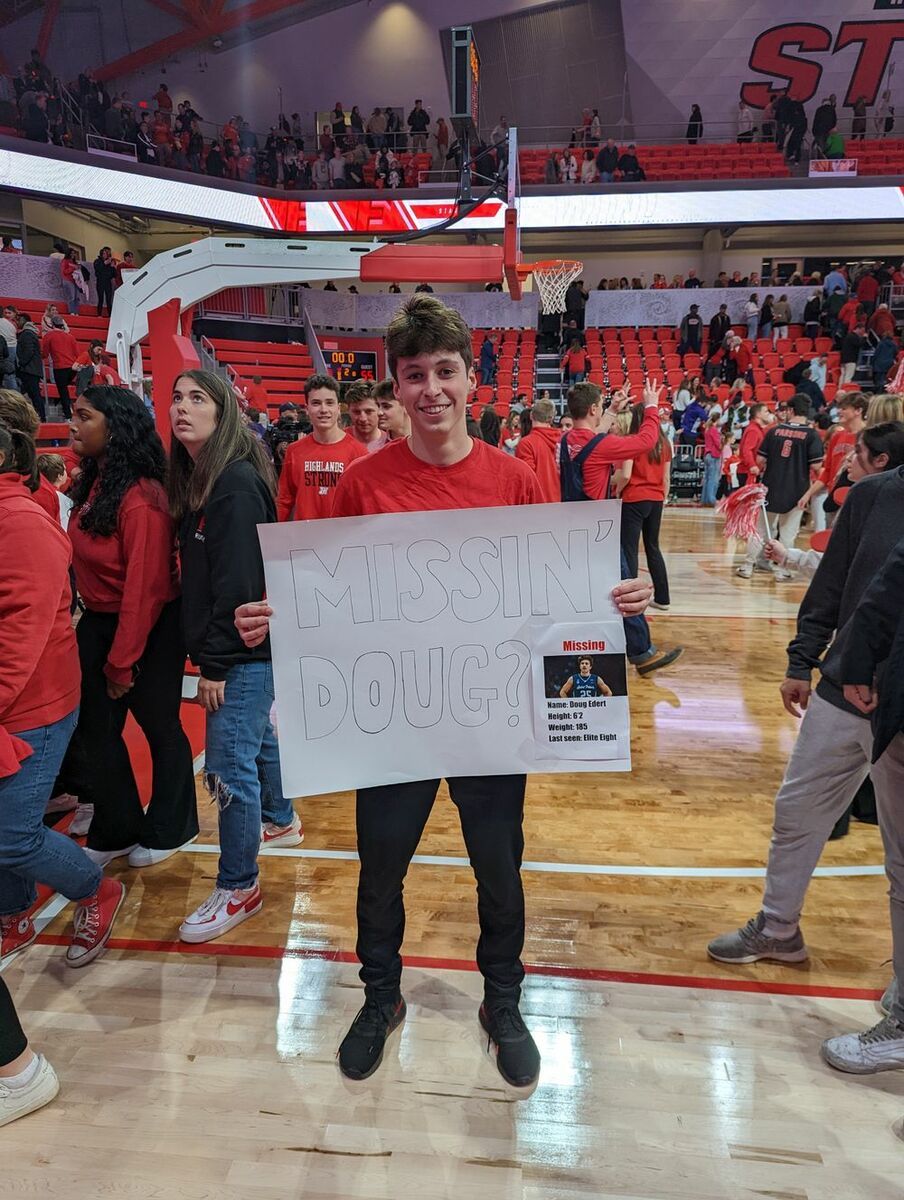
They were joined by thousands of Fairfield fans. The stadium wasn't completely full (the department told me that every seat was sold, even though there were empty seats), but the students almost completely filled out their section, with over 1,000 coming to the game. The Stags shot a whopping 31 free throws, compared to just six for Saint Peter's, even though the Peacocks were aggressive about driving to the basket. Those free throws were easily the difference, and I suspect the crowd might have had a teensy bit of responsibility for the officiating disparity.
After the game, the students flooded the court. They took pictures, jumped and yelled, and, as the crowd began to recede a bit, I saw a few bros doing pushups and kissing halfcourt.

Will the new building lead Fairfield to athletic glory? Probably not, as buildings don't have athletic eligibility and can't actually score any points. Alone, it won't generate $50 million in new revenues or guarantee a Big East invite, or lock down future NBA starters.
But it will give you a place that students can walk to, so they can wear sunglasses indoors, chant with their friends, make silly signs, and yell at officials.
Enough people felt so strongly about their experience doing that at Fairfield that they donated all the money needed to build this new arena.
So those experiences matter. On some level, they're really the only thing that matters.
And on that front, I'd say the early returns at The Leo D. Mahoney Arena are looking very, very good.
This newsletter is brought to you in part by Health Squeeze:

Discover new healthy habits in 5 MINUTES
The newsletter that makes learning about health easy and enjoyable. Join thousands of users and stay informed for free.
This newsletter is also brought to you in part by Trends.

Your next business idea, delivered weekly. Trends tells you the next big thing – months before everyone else. Their dynamic team of business analysts already outlined 1,000+ vetted business ideas you can start in a weekend, and they send new ideas and market signals straight to your inbox weekly. Try Trends for a week for only $1!
Extra Points earns a small commission on clicks to partner newsletters
If you have ideas for future Extra Points newsletters or #tips you want to share, our new tips line is [email protected]. To sponsor a future Extra Points newsletter, please email [email protected]. I'm also @MattBrownEP on Twitter, and @ExtraPointsMB on Instagram.





